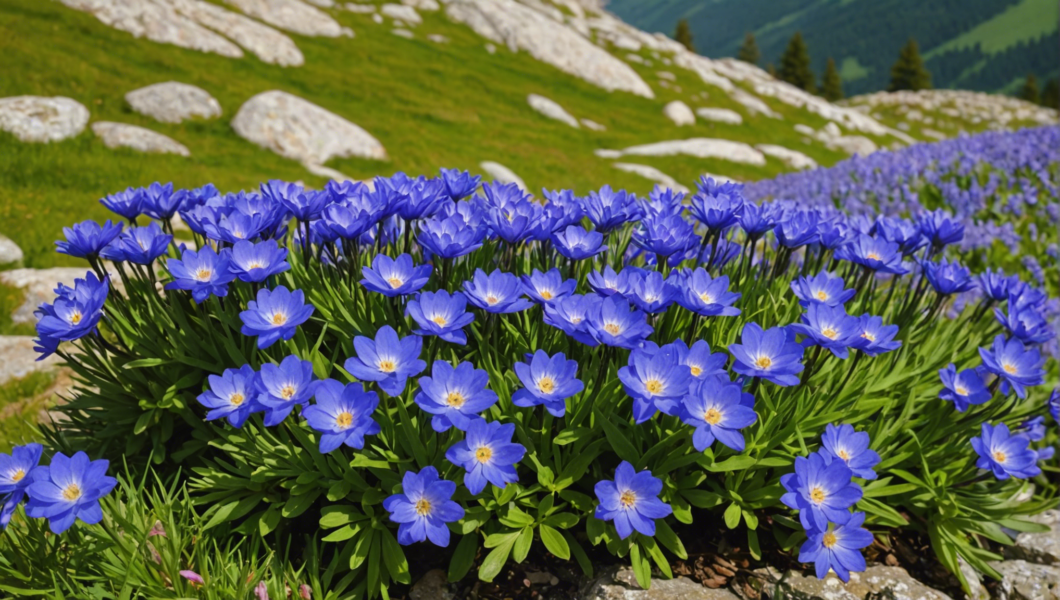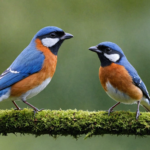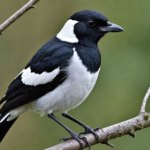When it comes to creating a beautiful and vibrant garden, alpine flowers are a great choice. With their stunning colors and unique textures, these flowers can truly enhance the beauty of any outdoor space. In this article, we will explore some easy-to-care-for alpine flowers that will add a pop of color to your garden.
Pensée des alpes
The “Pensée des alpes” is a beautiful flower that is commonly found in mountainous regions. With its bell-shaped petals measuring just 5 cm in diameter, this flower is easily recognizable. However, it is important to note that it does not tolerate high temperatures well. Therefore, it is best suited for gardens in cooler climates.
Scientific Name: Viola calcarata
Family: Violacées
Height: 10 cm
Soil: Rich in humus, moist, well-draining
Multiplication: Seeds or cuttings
La gentiane jaune
The “La gentiane jaune” is another stunning alpine flower that thrives in similar conditions as the Pensée des alpes. It stands out with its large yellow flowers that produce a nectar highly appreciated by bees. Its yellow corolla is also a distinctive feature that makes it easily identifiable.
Scientific Name: Gentiana lutea
Family: Gentianaceae
Height: 1.50 to 2 m
Soil: Deep soils rich in humus
Multiplication: Division of clumps
Pulsatille des Alpes
The “Pulsatille des Alpes” is a remarkable alpine flower that thrives in high altitudes and withstands the challenges of the mountain climate. It can mostly be found on rockeries and its delicate white petals attract bees and butterflies.
Scientific Name: Pulsatilla alpina
Family: Ranunculaceae
Height: 0.20 to 0.50 m
Soil: Light, calcareous
Multiplication: Sow seeds as soon as they are mature, without the plume.
L’Arnica des montagnes
The “L’Arnica des montagnes” is not only known for its numerous medicinal properties but also for its regulated or even prohibited collection in France. Its solitary or clustered yellow flowers are eye-catching, while its leaves form a small rosette.
Scientific Name: Arnica montana
Family: Astéracée
Height: 20 to 40 cm
Soil: Acidic soil
Multiplication: Division of plants
Le Colchique des Alpes
The “Le Colchique des Alpes” can be found at altitudes ranging from 600 meters to 2200 meters. This plant, with its tufted leaves, produces solitary flowers with pink hues. It should not be confused with lily-of-the-valley or bear’s garlic. The Colchique des Alpes is an indicator of biodiversity and is often found in humid meadows.
Scientific Name: Colchicum alpinum
Family: Colchicacées
Height: 5 — 15 cm
Soil: Acidic, Siliceous
Multiplication: Division of bulbs
L’Ancolie des Alpes
The “L’Ancolie des Alpes” blooms between altitudes of 1600 to 2000 m. This plant can grow up to 80 cm in height and produces several blue flowers, each with a spur. It contains a sweet nectar that is highly appreciated by beneficial insects and thrives in dry rocky lawns.
Scientific Name: Aquilegia alpina
Family: Renonculacées
Height: 80 cm
Soil: All types, rich
Multiplication: Self-seeding
By including stunning alpine flowers in your garden, you can easily enhance its beauty and create a visually appealing outdoor space. These easy-to-care-for flowers will add a pop of color and attract beneficial insects, making your garden a vibrant and thriving ecosystem.



